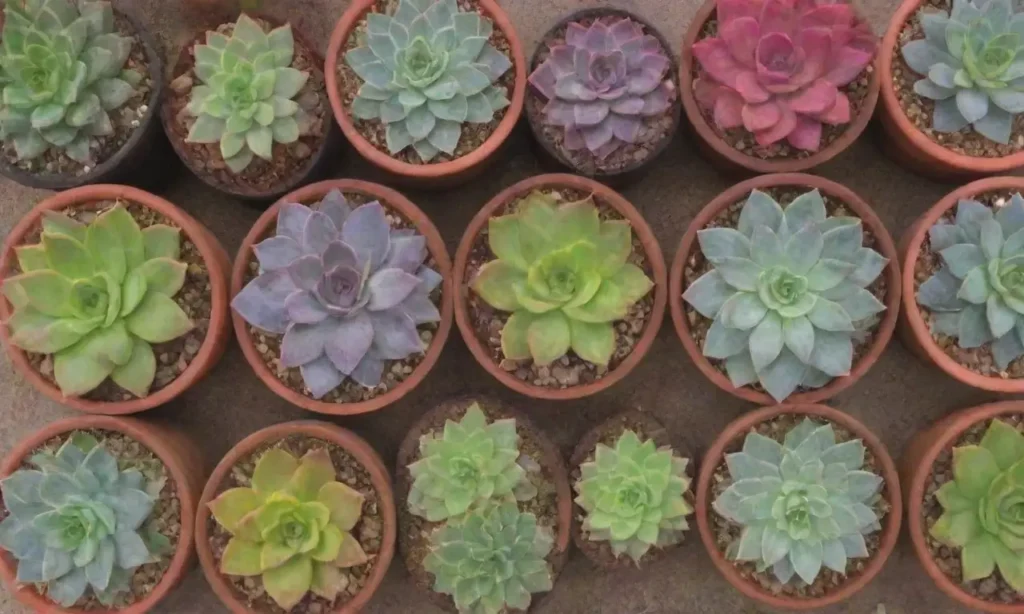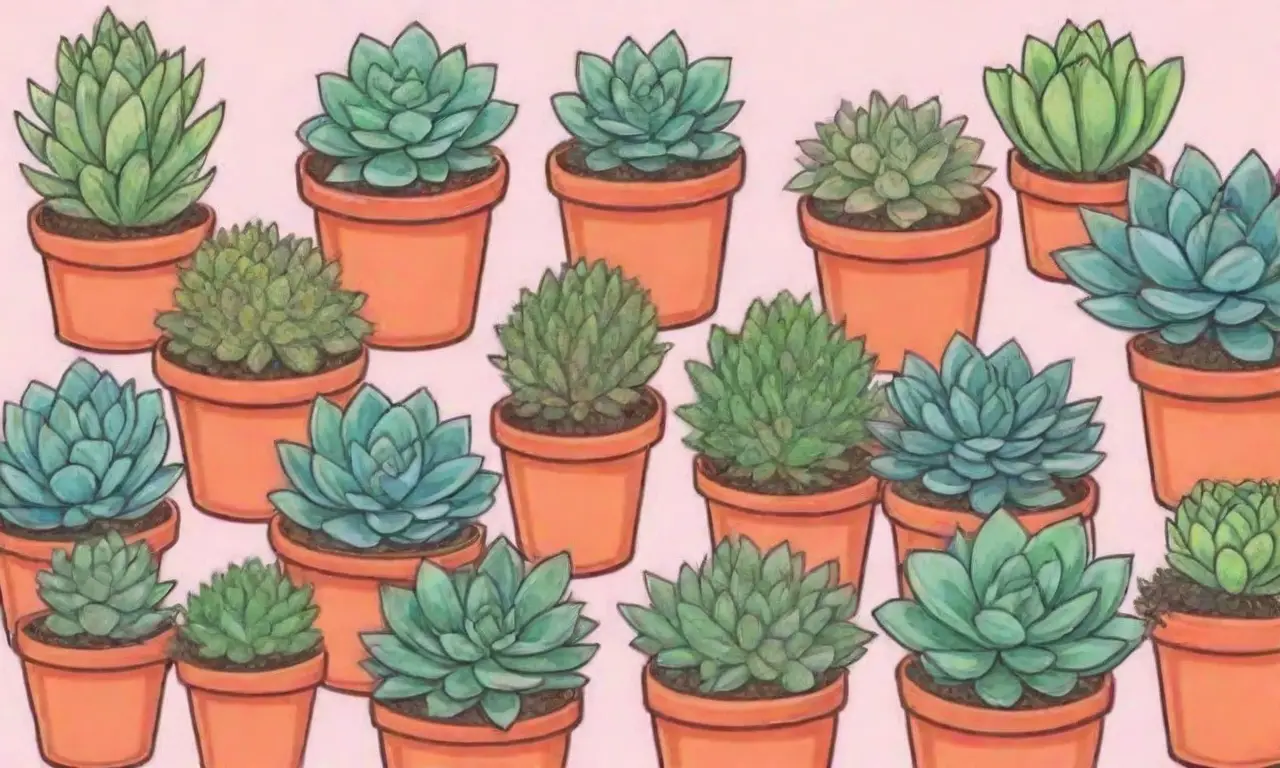How to Identify Seasonal Stress Signs in Your Succulents

Introduction
Succulents have become increasingly popular among plant enthusiasts and homeowners alike, thanks to their unique beauty and low-maintenance nature. However, like all living organisms, these plants can experience stress, particularly during seasonal changes. Stress in succulents can lead to various issues, including wilting, discoloration, or even death if not addressed effectively. This article aims to provide a detailed guide on how to identify the signs of seasonal stress in your succulents and how to care for them during these challenging periods.
In this article, we will cover a range of topics, including what seasonal stress is, the common signs to look for in your succulents, how to mitigate these signs, and some preventative measures to ensure your plants remain healthy through various seasons. By the end, you will have a well-rounded understanding of the conditions that can affect your succulents and how to care for them effectively.
Understanding Seasonal Stress in Succulents
What is Seasonal Stress?
Seasonal stress refers to the physiological changes that occur within succulents as they adapt to shifting environmental conditions throughout the year. Temperature changes, light variations, and humidity levels can significantly impact these resilient plants. For instance, most succulents naturally enter a dormant phase during the cooler months, slowing down their growth and requiring less water. However, as the seasons transition from winter to spring or summer to fall, these plants can experience stress if their care does not align with their needs.
One key aspect of understanding seasonal stress is recognizing the distinct growth phases of succulents. Many of these plants thrive in a specific temperature range and light intensity. When exposed to conditions outside their preferred parameters, they can exhibit stress symptoms, leading to deterioration in their overall health.
How Seasons Affect Succulent Care
The two main seasons that markedly affect succulents are winter and summer. During winter, many succulent species undergo dormancy and require less frequent watering and reduced exposure to direct sunlight. Conversely, during the hot summer months, these plants become more active and will need additional water, especially if placed in direct sunlight. A key factor in maintaining the health of your succulents is understanding how to adjust their care in accordance with the changes in seasons.
Another important point to consider is that each species of succulent may react differently to temperature fluctuations and light alterations. For instance, some succulents may thrive in extreme heat, while others prefer a more moderate climate. Understanding the specific needs of your succulent species will allow you to tailor your care practices accordingly, minimizing stress and promoting robust growth.
Common Signs of Stress in Succulents
Wilting and Drooping Leaves
One of the first signs of stress in succulents is wilting or drooping leaves, which can occur for various reasons. Wilting may result from underwatering, where the plant is deprived of the moisture it needs, leading to dehydration. On the other hand, overwatering can lead to root rot, causing similar drooping effects. It is crucial to regularly check the soil moisture level and adjust your watering routine based on the plant's needs and the season.
In addition to moisture considerations, the angle of light can contribute to wilting. During the late spring or summer, when sunlight intensity increases, succulents can become scorched if they are not acclimatized to the brighter conditions. If you notice your leaves starting to droop along with a change in color to a dull shade, it may be an indication that your succulent is experiencing seasonal stress.
Color Changes in Foliage
Another vital sign to monitor in stress-prone succulents is the color of the leaves. Healthy succulents usually exhibit vibrant, rich hues that indicate their overall well-being. However, when plants are stressed, they may lose their pigmentation and develop pale or discolored leaves. This can occur due to too much exposure to intense sunlight, leading to sunburn, or a lack of essential nutrients in the soil.
In some cases, succulents may show signs of etiolation, a condition characterized by elongated stems and widely spaced leaves due to insufficient light. This growth pattern occurs when the succulent is searching for sunlight, and the stress can lead to a weakened and less aesthetically appealing plant. When identifying color changes, always take note of the type of succulent and its specific light requirements to accurately assess the situation.
Leaf Drop and Shriveling
Leaf drop is another common sign of stress that can manifest during seasonal changes, particularly if the succulent is adjusting to new humidity levels or temperature fluctuations. When a plant drops its leaves, it is often attempting to conserve moisture, especially in the case of succulents that may be experiencing overwatering or localized drafts from open windows or air conditioning units.
Shriveling leaves, meanwhile, indicate that your plant is severely dehydrated and not receiving enough water, which can commonly happen when the air becomes excessively dry, particularly during winter months. Regular observation of your succulents will allow you to catch these signs early and adjust your watering and humidity correction measures proactively. If you find succulents losing leaves or showing signs of shriveling, consider increasing their watering frequency while also ensuring that humidity levels remain optimal.
How to Mitigate Seasonal Stress

Adjusting Watering Schedules
To mitigate stress during seasonal changes, one of the most effective strategies is adapting your watering schedule. During hotter months, succulents typically require more frequent watering, usually every two weeks or so, while in winter, see if you can reduce that to once a month or even less for dormant plants. Always check the soil dryness by inserting your finger about an inch deep; if the soil feels dry, it's time to water. Conversely, if it still feels moist, it's best to wait a few more days before checking again.
Also, consider the soil's drainage capabilities! Using well-draining soil can greatly improve your plant's root environment. A mix designed specifically for succulents helps prevent water retention, which in turn will reduce the risk of root rot. If your succulent begins to exhibit signs of stress, adjusting its watering schedule can make a significant difference in helping it recover.
Creating a Suitable Environment
Creating a suitable environment can have a dramatic impact on reducing seasonal stress. Thrive by placing your succulents in the appropriate light conditions; many thrive under bright, indirect sunlight. However, when temperatures start to rise, it may be helpful to use sheer curtains to diffuse harsh rays or to rotate your plants to avoid excessive direct exposure.
Moreover, during the colder months, ensure your succulents are shielded from cold drafts, such as those that might come from an exposed window or an air conditioning vent. Adjusting your indoor arrangements is equally important when the seasons shift, as you may need to introduce supplemental lighting for indoor plants during the winter months or even provide some ventilation during the heat of summer.
Nutrient Management
Providing your succulents with the right nutrients, especially during seasonal transitions, is critical for stress management. During the growing season, typically spring and summer, consider using a balanced fertilizer designed for cacti and succulents to supply essential nutrients. Follow the manufacturer's instructions for correct usage; typically, you can fertilize every four to six weeks.
However, be cautious about fertilizing during the dormant season, as too much nutrition can contribute to stress rather than alleviate it. Instead, focus on maintaining overall soil health by enhancing drainage and aeration through materials like pumice or perlite. Good nutrient balance is especially significant after potting or during repotting, when plants are often most susceptible to stress.
Conclusion
In summary, understanding how to identify and manage seasonal stress in your succulents is essential for their overall health and vitality. By watching for key stress signs such as wilting, color changes, and leaf drop, you can quickly intervene and adjust your care routine accordingly. Adjusting your watering schedule, creating a suitable environment, and managing nutrients are effective strategies to help your succulents navigate seasonal transitions without enduring unnecessary stress.
With attention and care, your succulents can thrive and brighten your indoor or outdoor spaces year-round. Remember, every succulent has unique requirements based on its species, so always consider individual needs when assessing stress responses. Whether you are a seasoned succulent lover or a newbie, your ability to properly interpret these stress signals will undoubtedly contribute to flourishing and stunning plants that bring you joy and satisfaction.
If you want to read more articles similar to How to Identify Seasonal Stress Signs in Your Succulents, you can visit the Seasonal care category.
